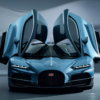When a manufacturer makes a large, functional and inexpensive car, the chances that it will also be beautiful are slim. Okavango, with its not very graceful silhouette, does not even pretend to be the latter. But, like many big guys with rough features, it is kind inside and somehow cozy in its simplicity. There is no pretense here – all these attempts of modern cars to be fashionable, to look aggressive or to seem luxurious. It is simply a big car that copes well with its task of transporting a large company.
Of course, the exterior has some “time features” and Asianism in the worst sense of the word: abundant chrome all over the body (be careful, the trim on the edge of the hood tends to peel off at high speed), a disproportionately large radiator grille, false air ducts in the front bumper and hypertrophied quasi-nozzles in the rear. And also excessively inflated arches with relatively small (for such dimensions of the body) wheels inside them. All together it looks somewhat caricatured, so users of this model will need a healthy dose of self-irony.
Dmitry Pitersky 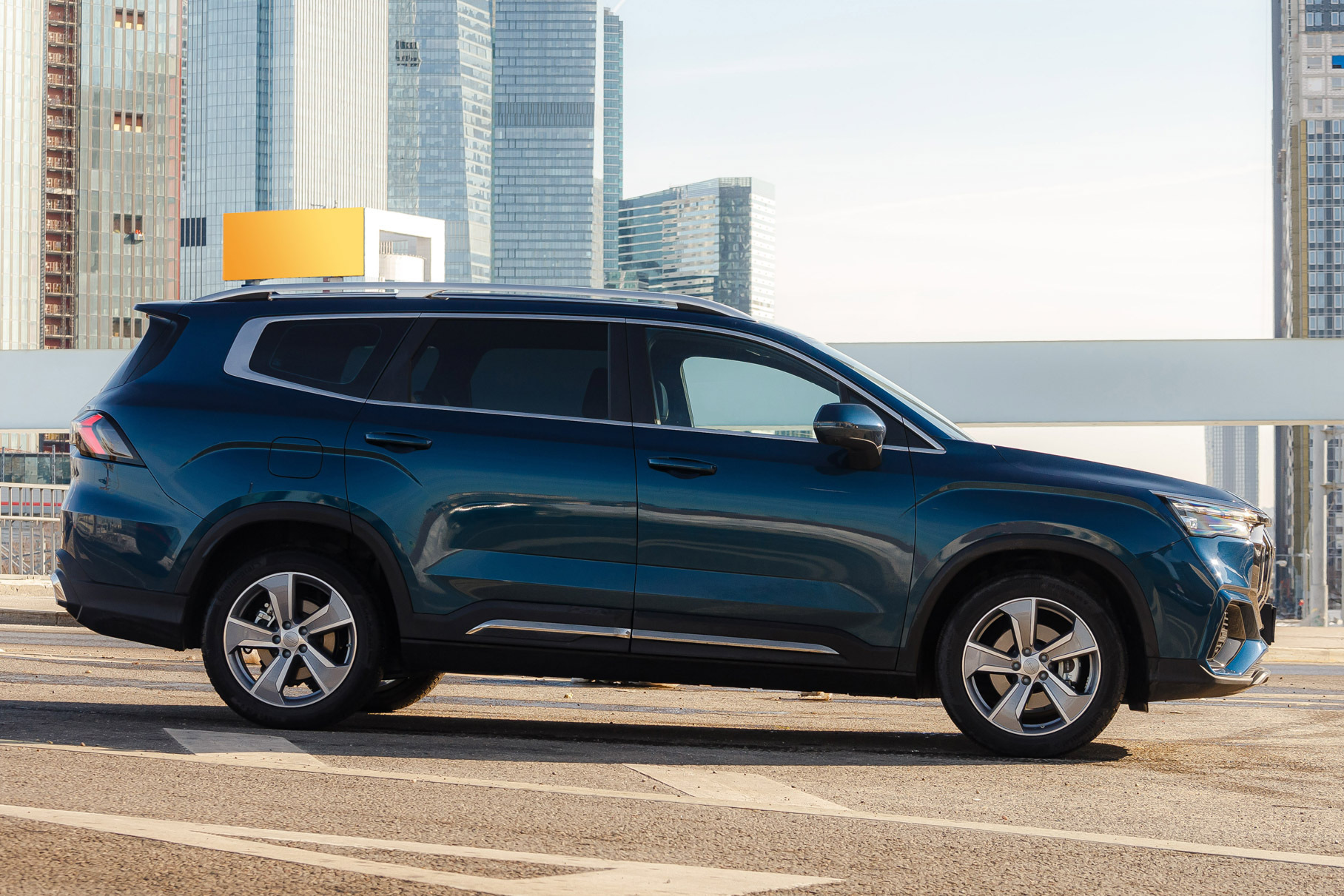 Dmitry Pitersky
Dmitry Pitersky 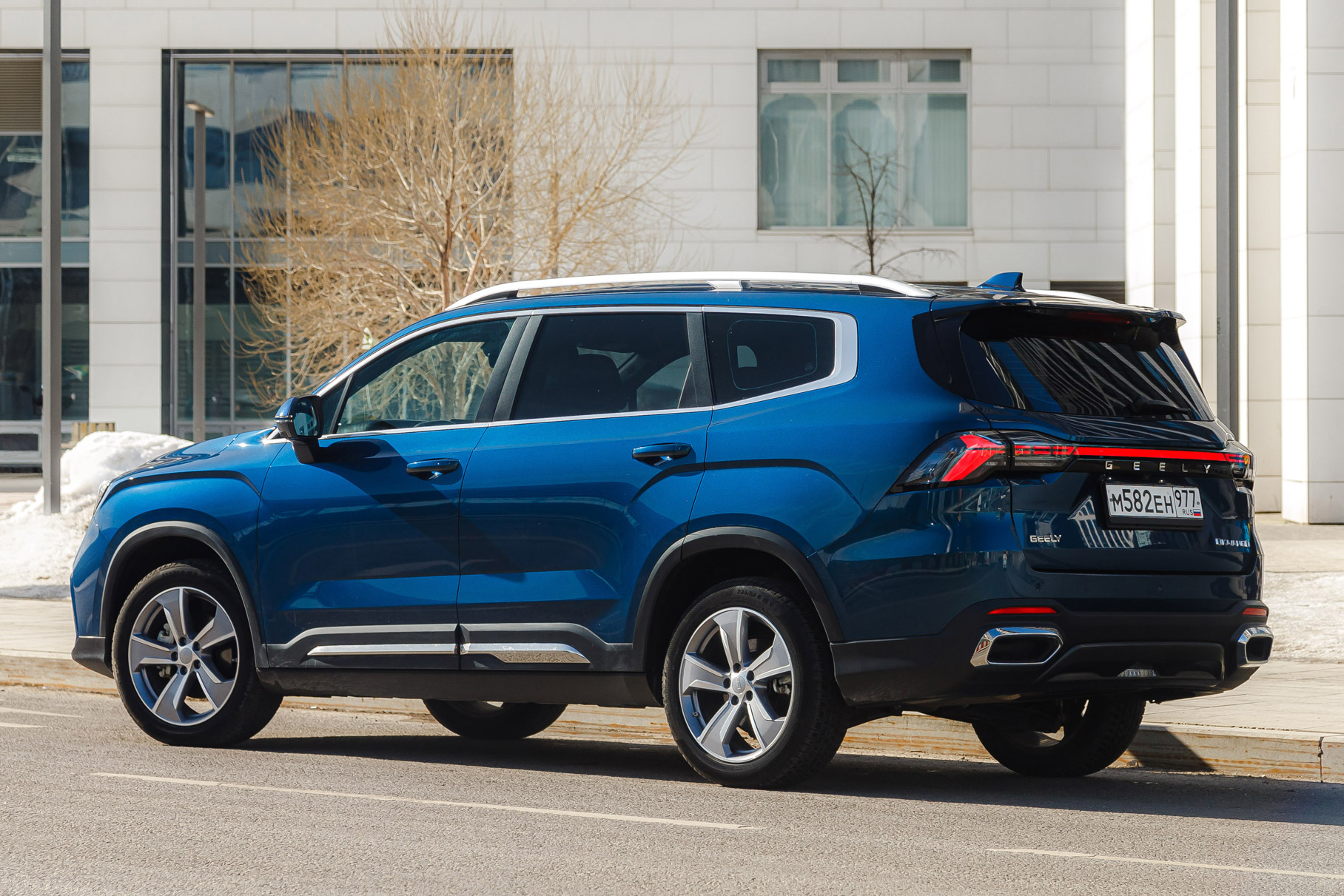 Dmitry Pitersky
Dmitry Pitersky
On the other hand, how can you do without it when you buy a front-wheel drive Chinese almost-bus instead of a fashionable futuristic Atlas? You exchange a chic design and better dynamics for a trunk that swallows bicycles, tires, strollers, hockey bags and even boxes with the interior of the apartment without noticing. My test drive coincided with my move – so I managed to check that just three trips with a load not even up to the roof replace calling a whole “Gazelle”.
 Dmitry Pitersky
Dmitry Pitersky 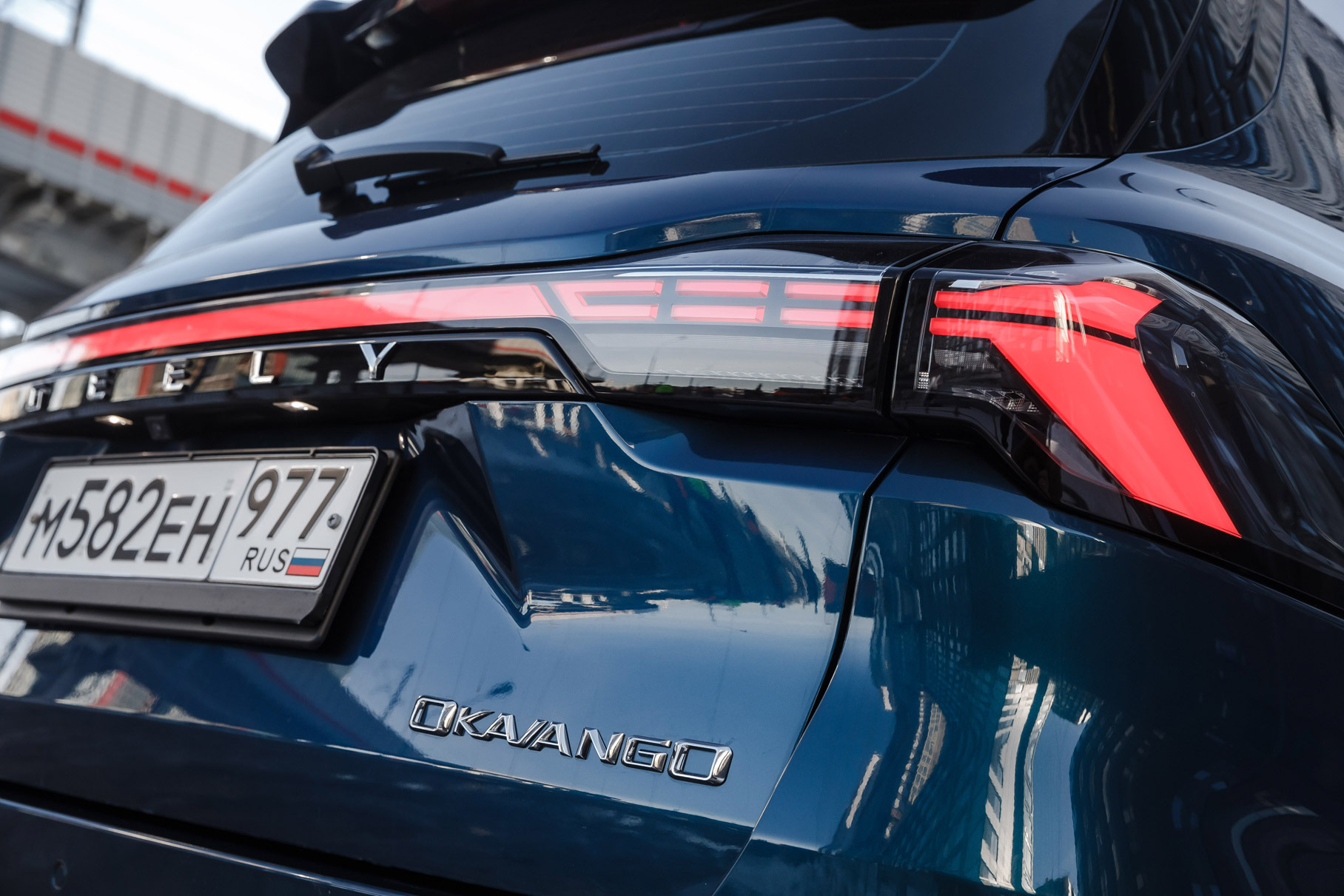 Dmitry Pitersky
Dmitry Pitersky 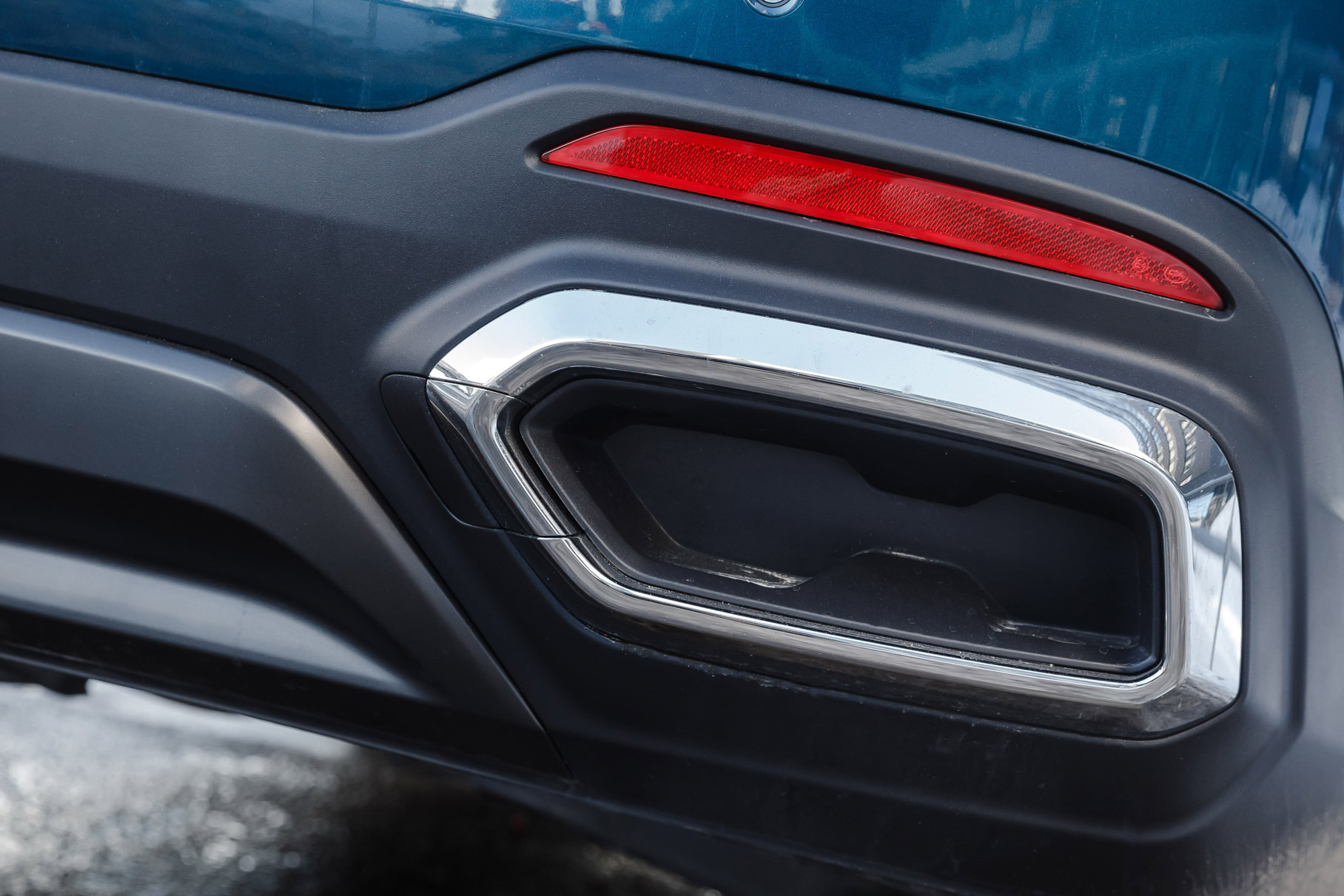 Dmitry Pitersky
Dmitry Pitersky 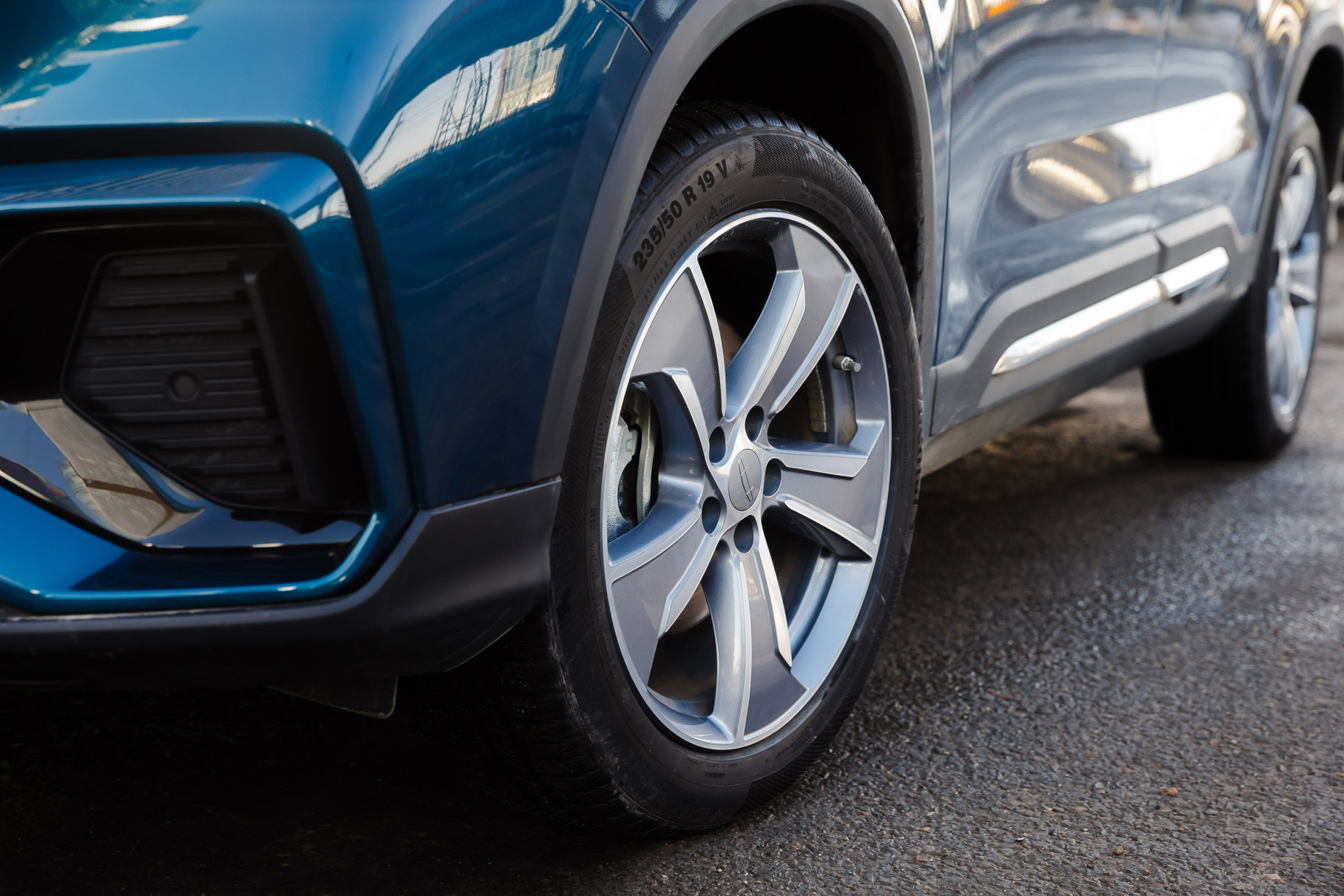 Dmitry Pitersky
Dmitry Pitersky  Dmitry Pitersky
Dmitry Pitersky  Dmitry Pitersky
Dmitry Pitersky 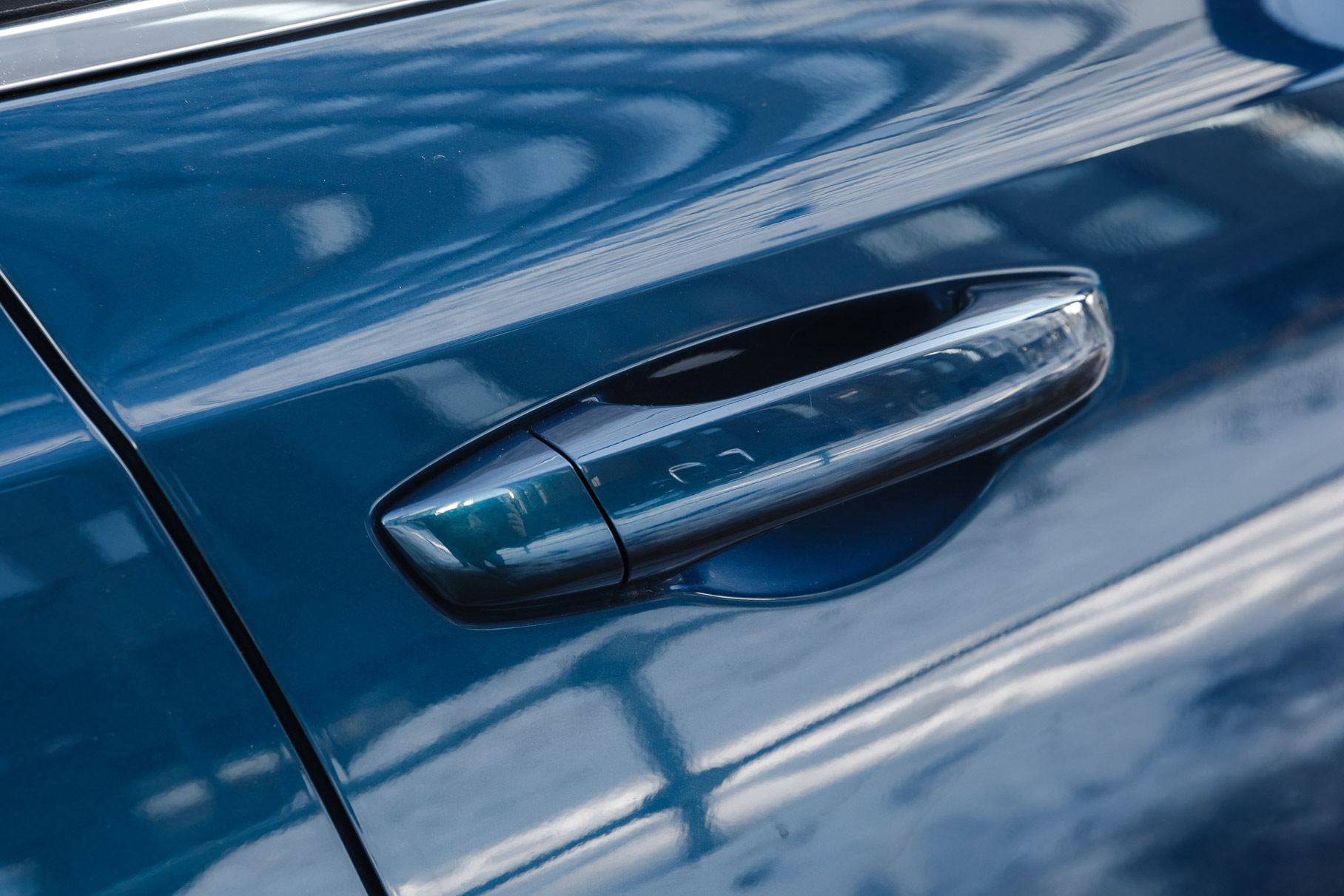 Dmitry Pitersky
Dmitry Pitersky
At the same time, despite its clumsy appearance, Okavango is unexpectedly agile in motion. If from the outside it looks like a crossover, and from the inside more like a minivan, then from behind the wheel it is perceived almost as a station wagon. The reason is that all communication with a large car is permeated with unexpected ease – from the search for functions in the cabin (except for seat heating, still hidden in the “multimedia”) to maneuvers in traffic.
 An abundance of glove compartments, shelves and cup holders, as well as dark ceiling upholstery and a huge panoramic sunroof add coziness to the simple interior.
An abundance of glove compartments, shelves and cup holders, as well as dark ceiling upholstery and a huge panoramic sunroof add coziness to the simple interior.
Dmitry Pitersky 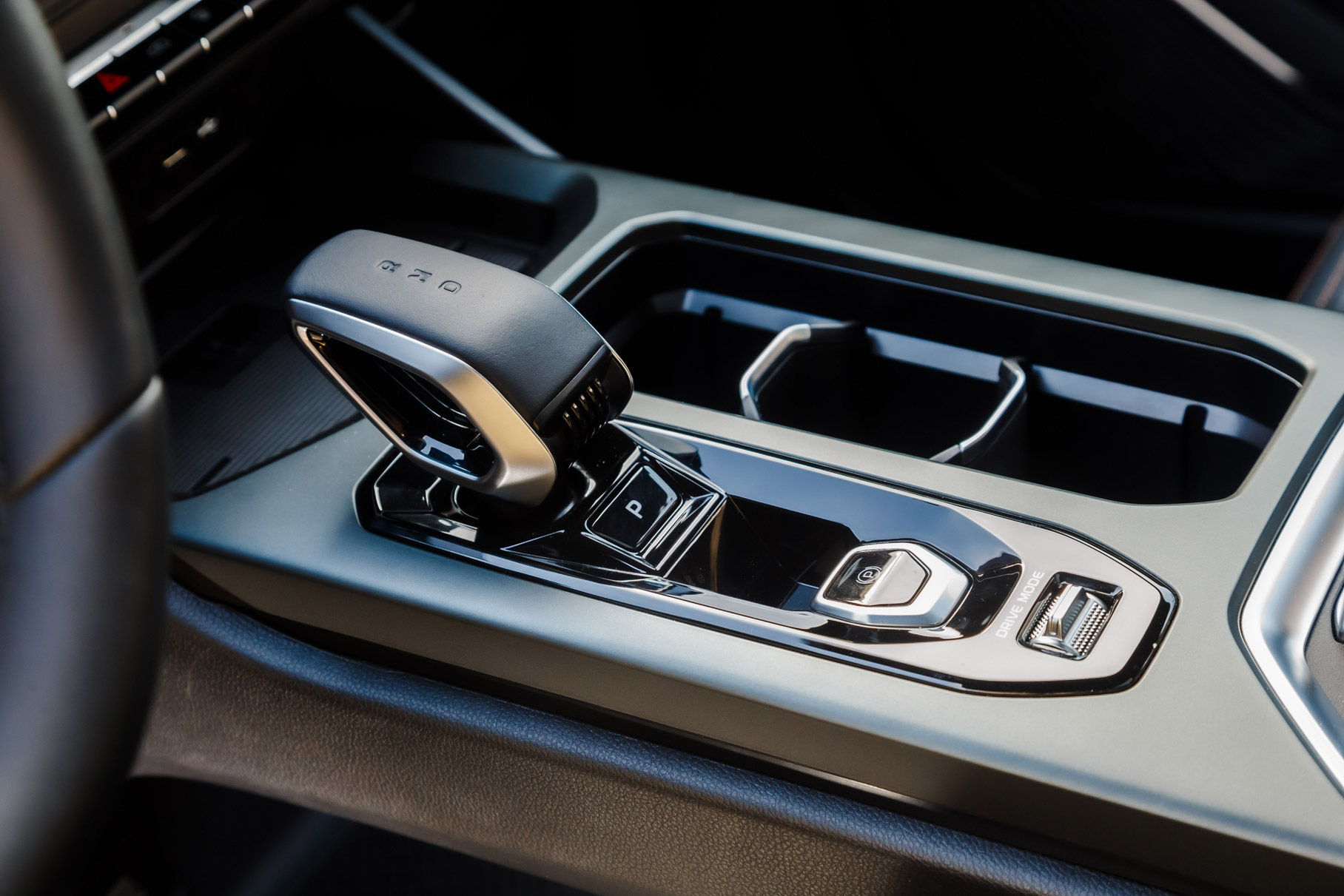 Dmitry Pitersky
Dmitry Pitersky 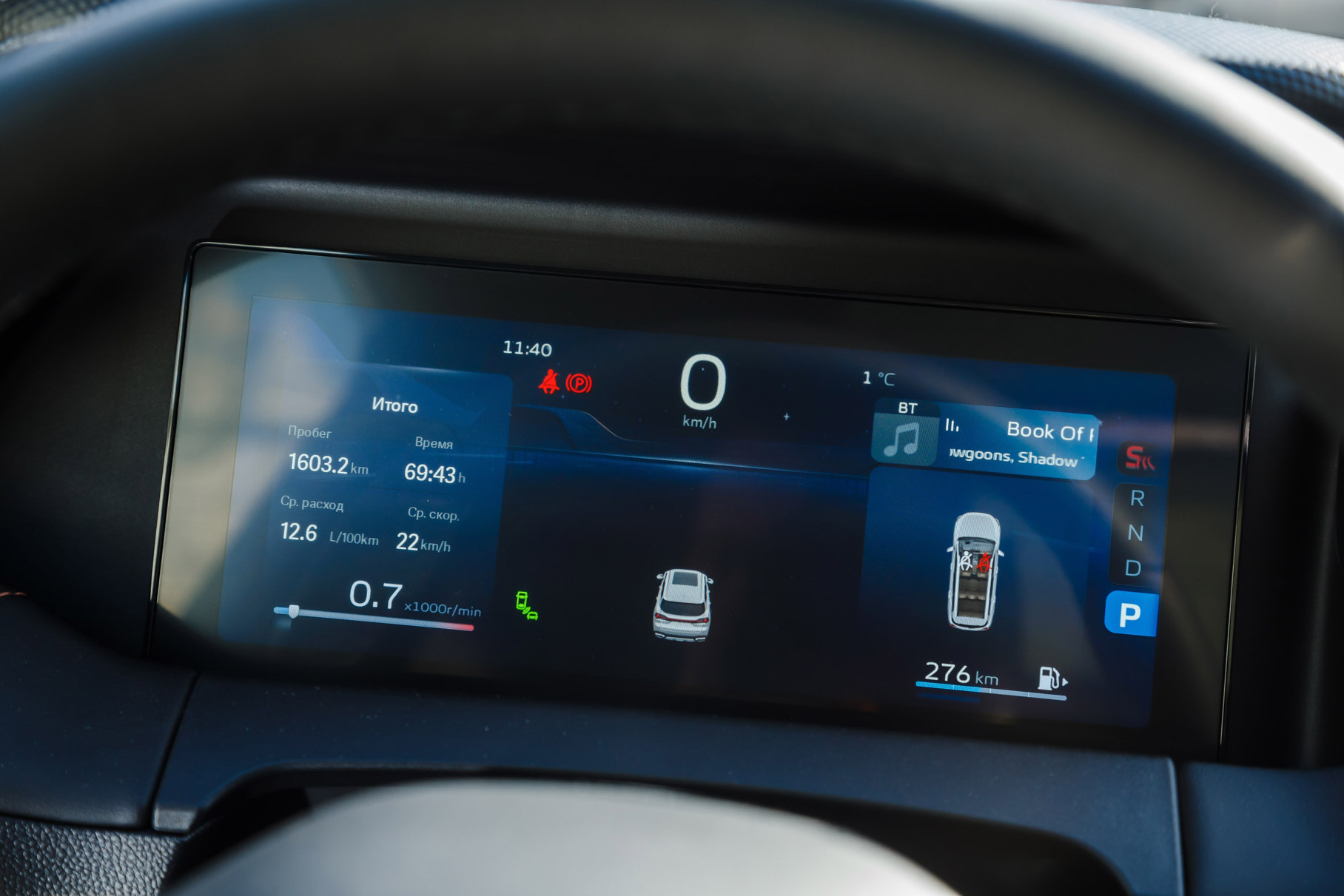 Dmitry Pitersky
Dmitry Pitersky  Dmitry Pitersky
Dmitry Pitersky  Dmitry Pitersky
Dmitry Pitersky 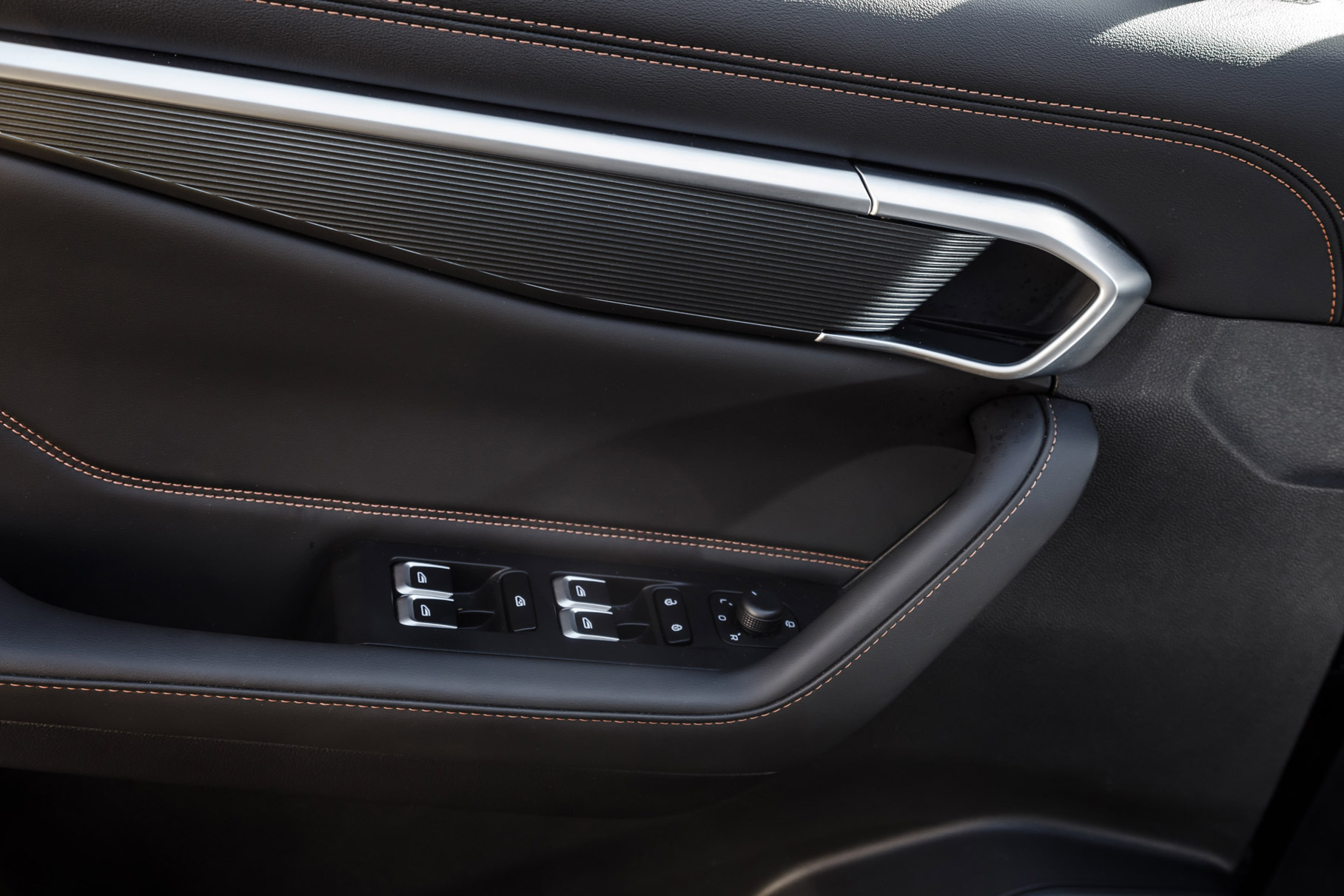 Dmitry Pitersky
Dmitry Pitersky 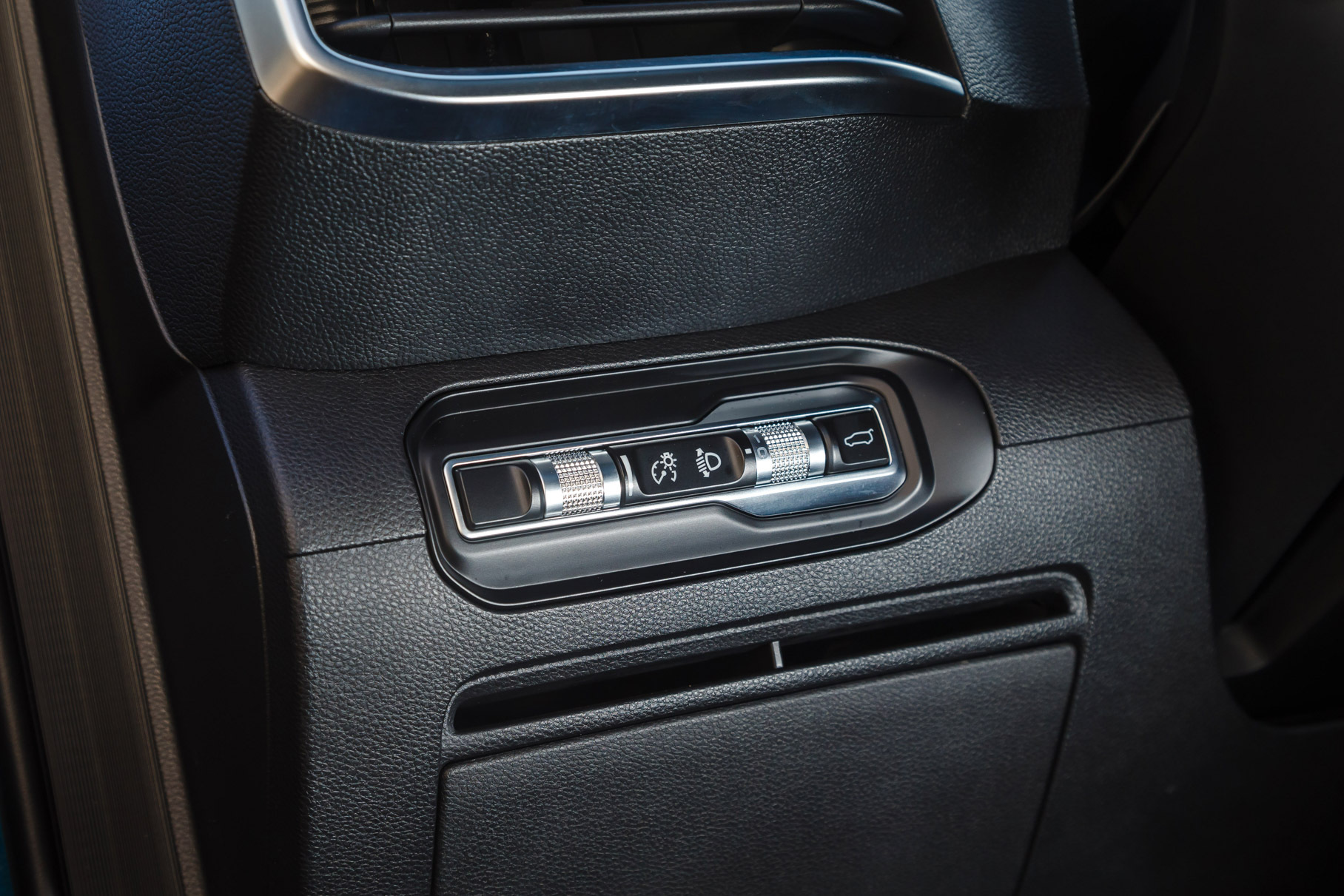 Dmitry Pitersky
Dmitry Pitersky 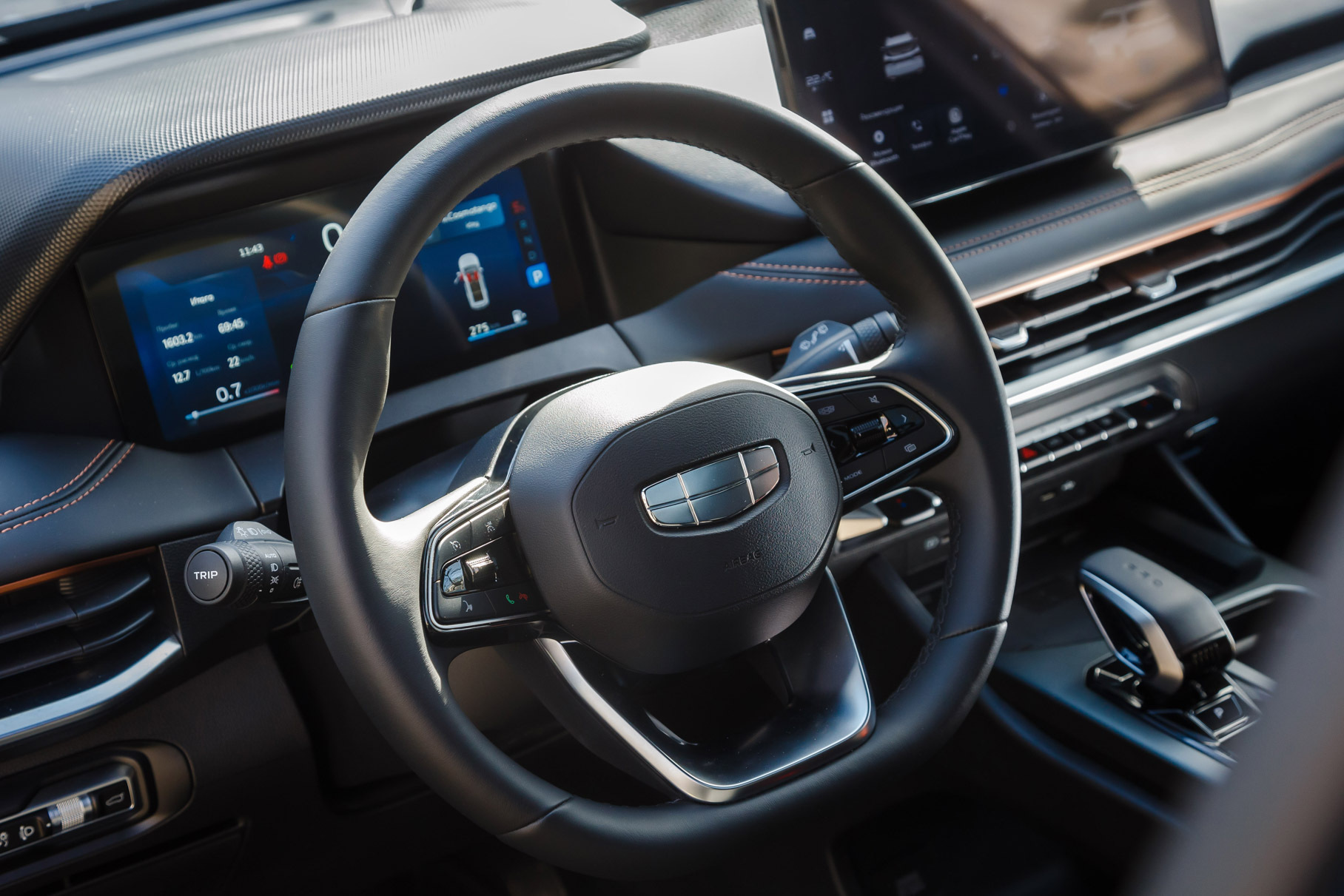 Dmitry Pitersky
Dmitry Pitersky  Dmitry Pitersky
Dmitry Pitersky 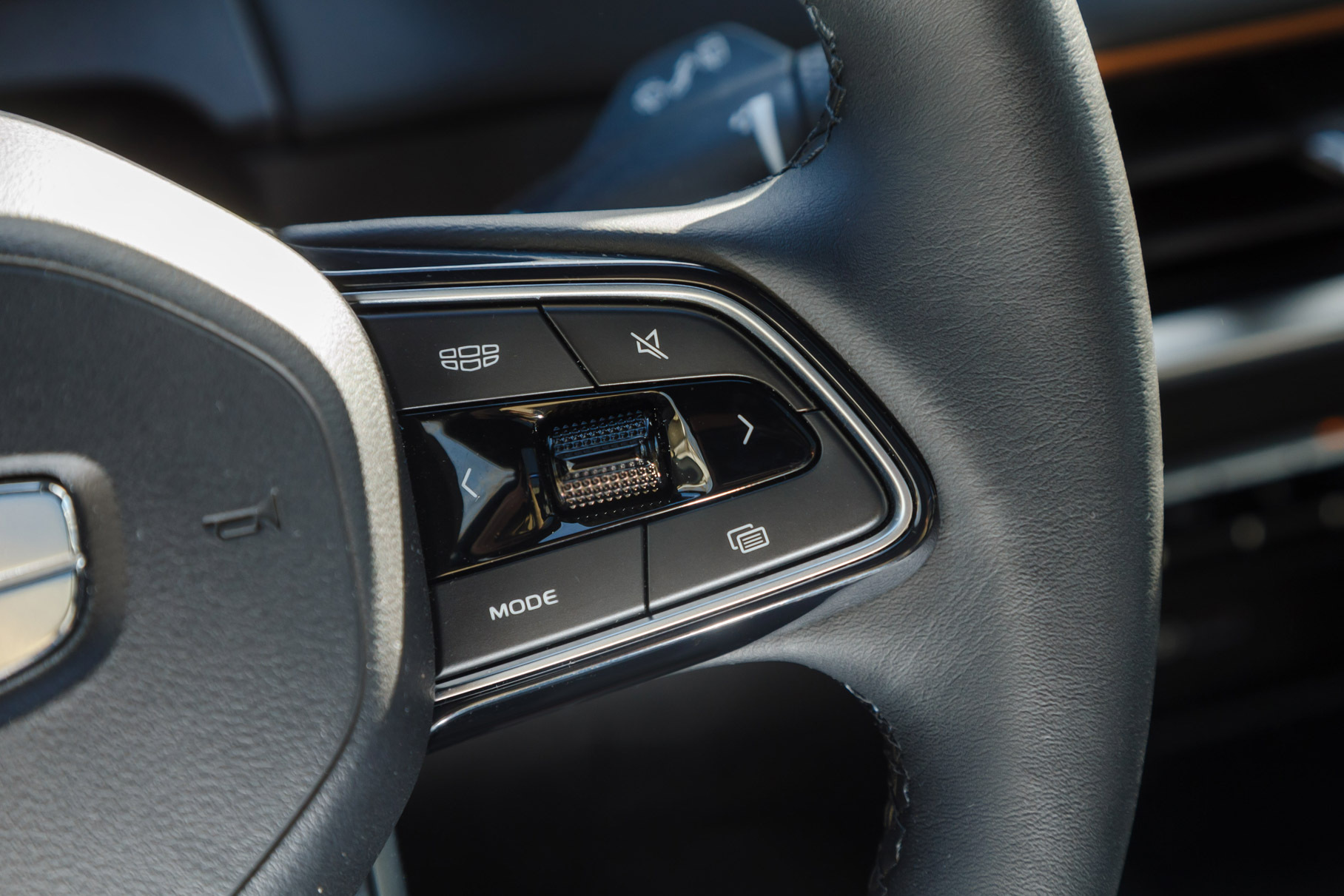 Dmitry Pitersky
Dmitry Pitersky
There are, of course, some questions about the interior design. The diamonds on the seats and the contrasting stitching on the panel upholstery look downright gaudy, although they partly compensate for the budget textures and materials. The simple and even somewhat rough interior trim has become the area of savings that is inevitable with such a moderate price for a large and fairly powerful car. But the main thing is that this fundamentally unremarkable interior turned out to be more comfortable than the designer riot found inside the new Atlas.
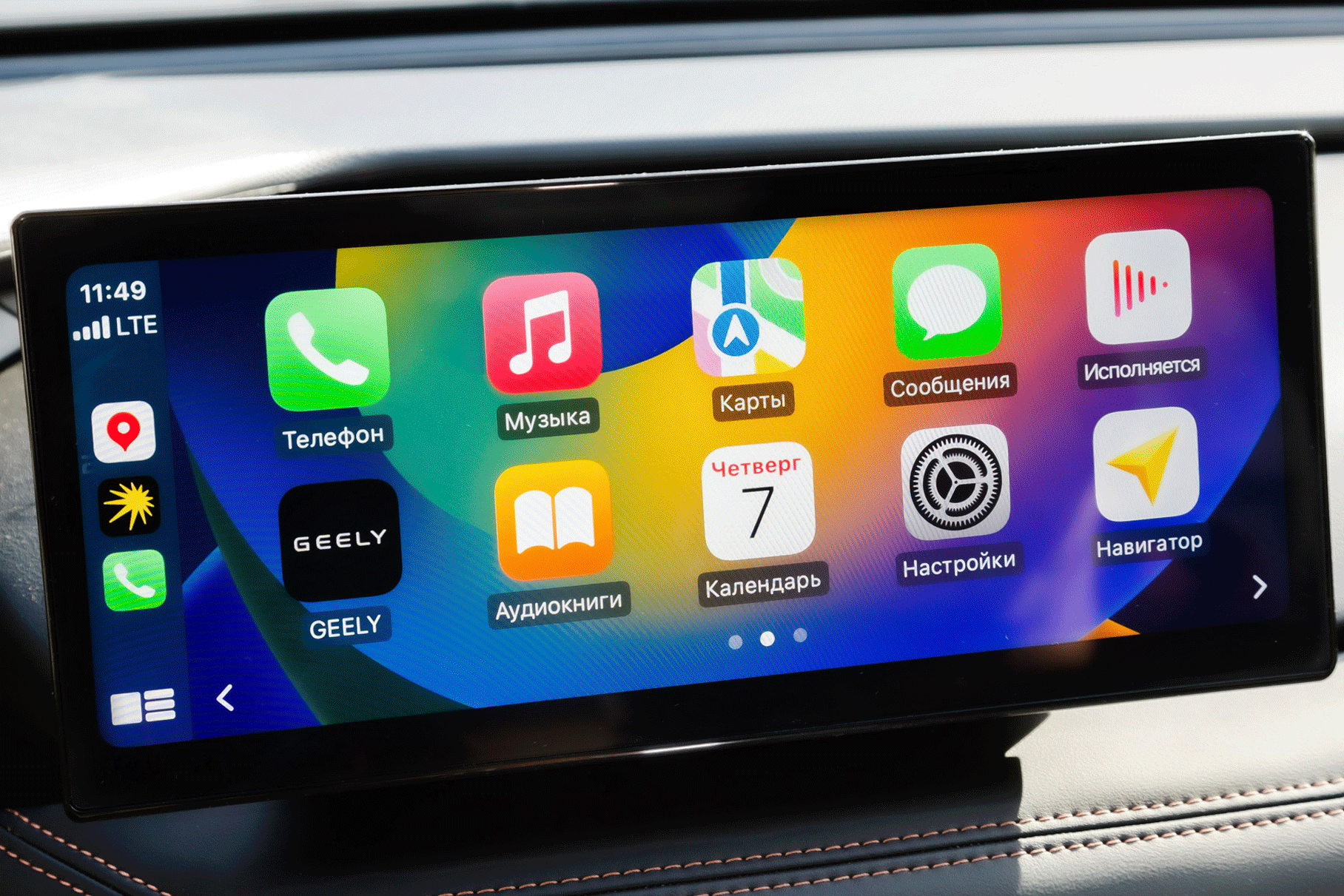 Dmitry Pitersky
Dmitry Pitersky
Unlike the latter, all functions are in their places in Okavango: the windows are easy to turn, the climate and driving modes are controlled by easily accessible physical keys (except for the heating), and the multimedia display has an adequate diagonal. Of course, the latter does not reduce the functionality of the entertainment system in any way compared to the excessively large “TV” of the Atlas. Perhaps the nameless acoustics in Okavango sound so-so, but the branded Infinity in Atlas does not shine either.
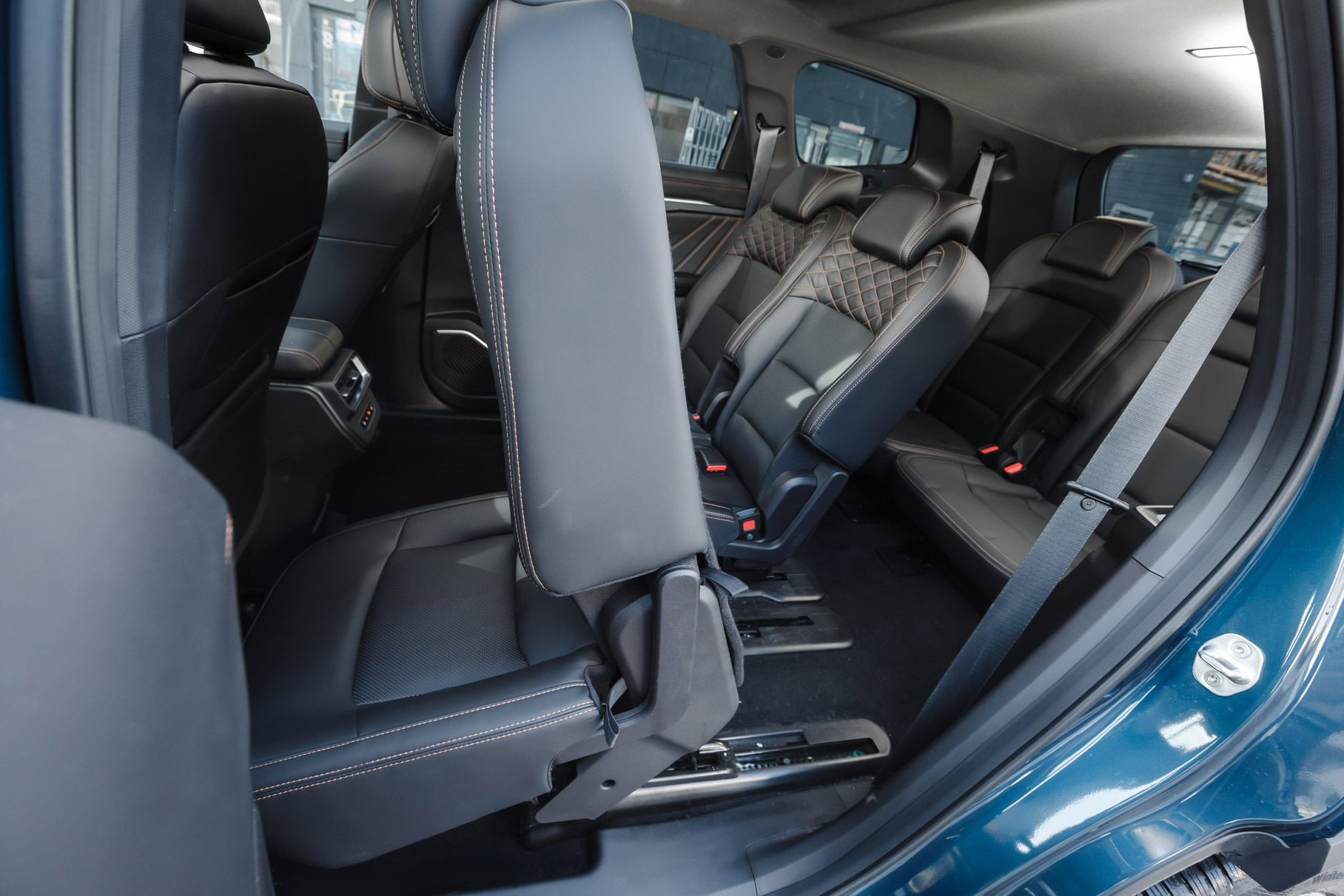 All seats move easily and fold individually; the third row is also easy to access. The only criticism is the driver’s seat: the steering wheel does not extend far enough “towards you”, and the seat cushion is a bit short.
All seats move easily and fold individually; the third row is also easy to access. The only criticism is the driver’s seat: the steering wheel does not extend far enough “towards you”, and the seat cushion is a bit short.
Dmitry Pitersky 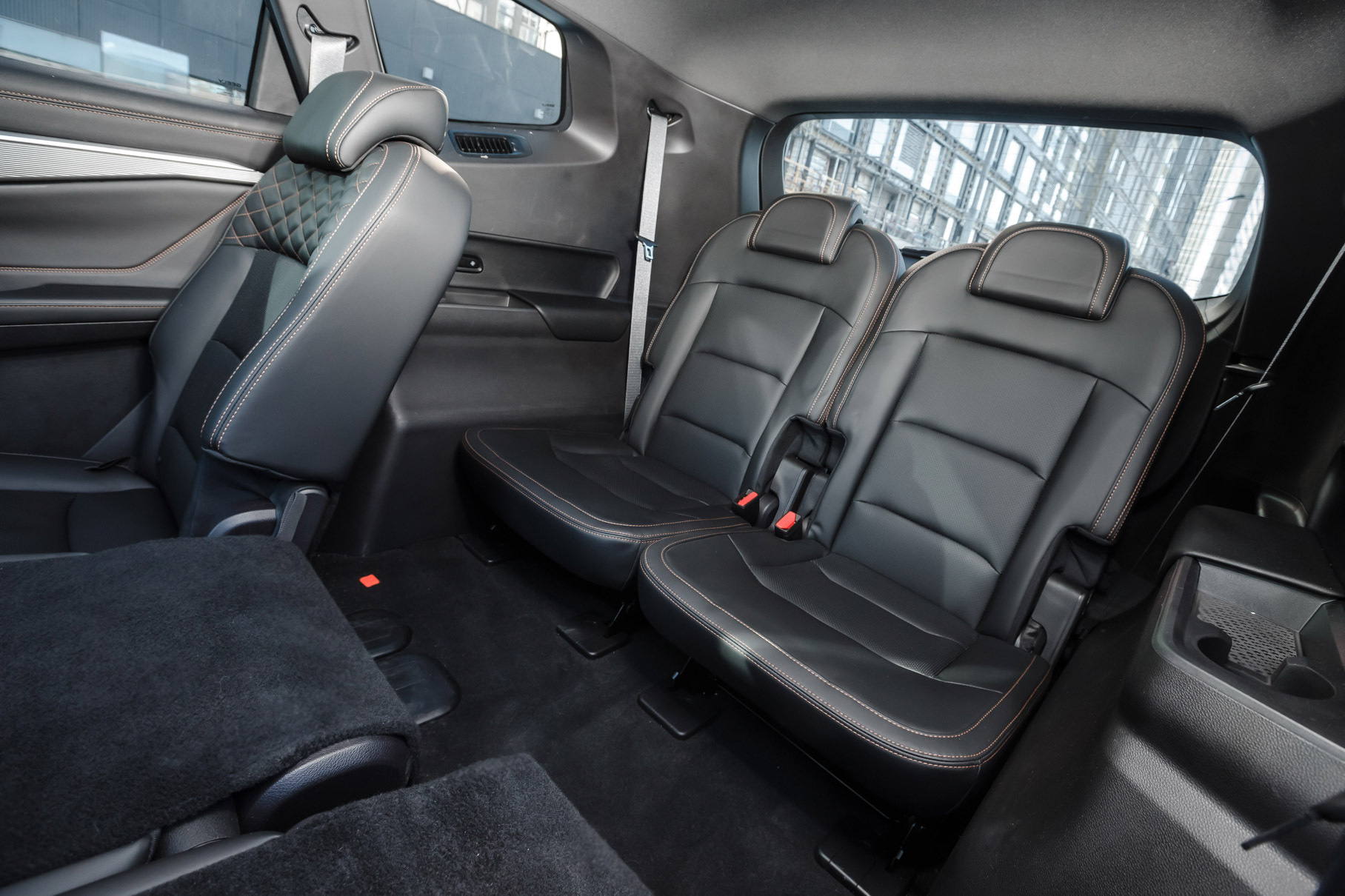 Dmitry Pitersky
Dmitry Pitersky  Dmitry Pitersky
Dmitry Pitersky  Dmitry Pitersky
Dmitry Pitersky
And the big thing about Okavango is that it really should be big — the interior space. There are three truly full rows of seats, which are easy to get to and comfortable to sit in. The third row is installed slightly higher than the second, so the “chin on knees” position, typical for many three-row cars, is practically excluded there. At the same time, there is enough space in the “trunk” in the foot, knee and head areas to comfortably accommodate not only children, but also average-sized adults.
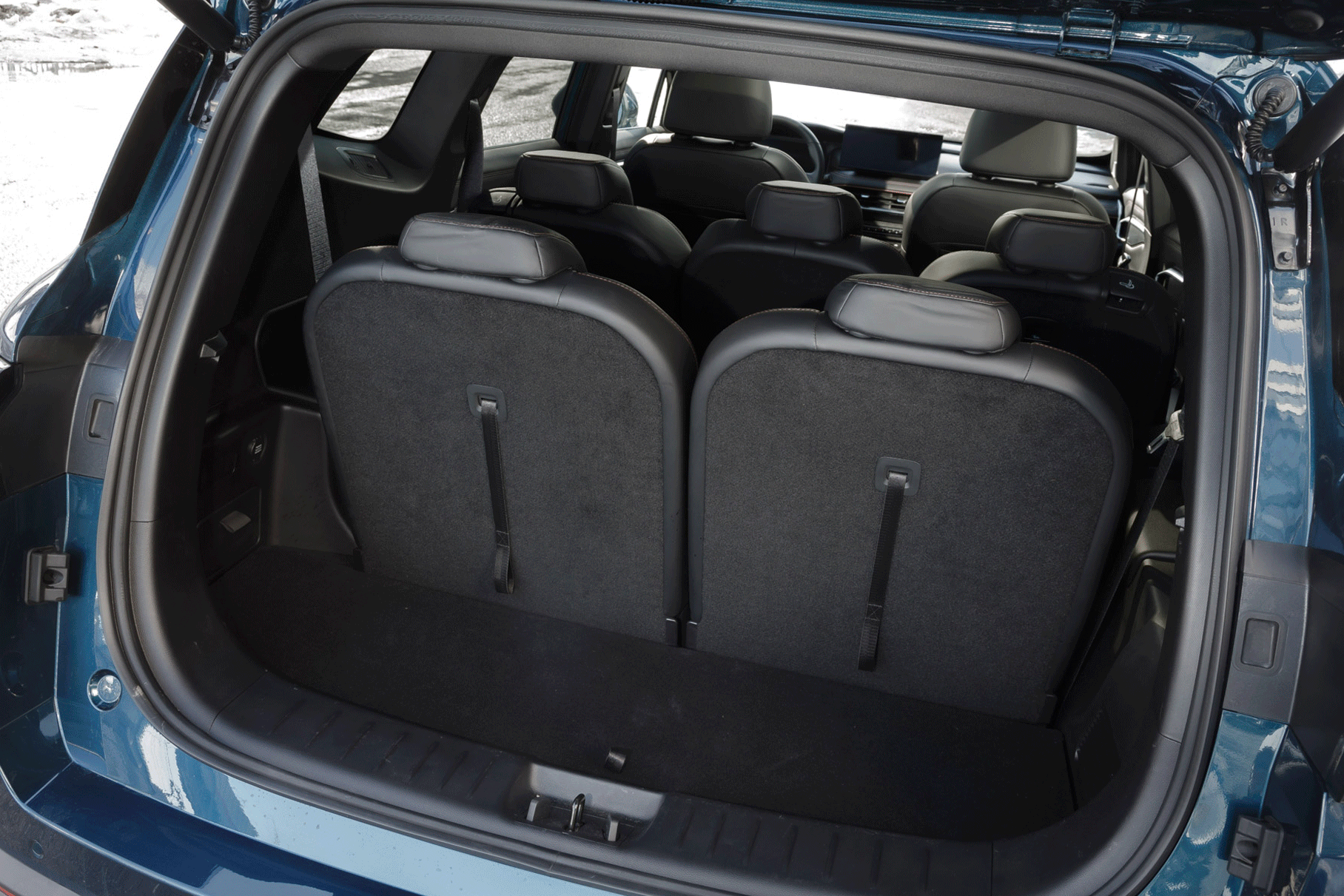 With the third row seats folded down, the Okavango still has a trunk comparable to the cargo area of, for example, a Mini Cooper hatchback.
With the third row seats folded down, the Okavango still has a trunk comparable to the cargo area of, for example, a Mini Cooper hatchback.
Dmitry Pitersky
Driving the Okavango is easy and enjoyable, thanks to excellent visibility, responsive controls and a punchy powertrain. The dual-clutch gearbox is so well tuned that at first I even thought it was an 8-speed automatic from the Tugella, and not the 7-speed robotic one shared with the Atlas. Unlike the latter, the transmission in the Okavango does not draw attention to itself at all when starting off, everything happens quickly and smoothly.
 Compared to the global version, for the Russian market the 2-liter turbo engine Drive-E has been derated from 218 to 200 hp. But this is not significant at all, since the torque has remained unchanged.
Compared to the global version, for the Russian market the 2-liter turbo engine Drive-E has been derated from 218 to 200 hp. But this is not significant at all, since the torque has remained unchanged.
Dmitry Pitersky
The speakers under the hood were placed even with a reserve for such a large car. Although the declared acceleration figures are not impressive (9.6 sec), according to subjective feelings, the engine at any time carries as required. It does not matter what the speed, what gear and what mode the power unit is in – 325 Newton meters are always at your disposal. And if you lower the glass, then the cheerful whistle of the turbine and the sighs of the bypass valve will be reflected from the walls of houses and fences – for the right mood behind the wheel.
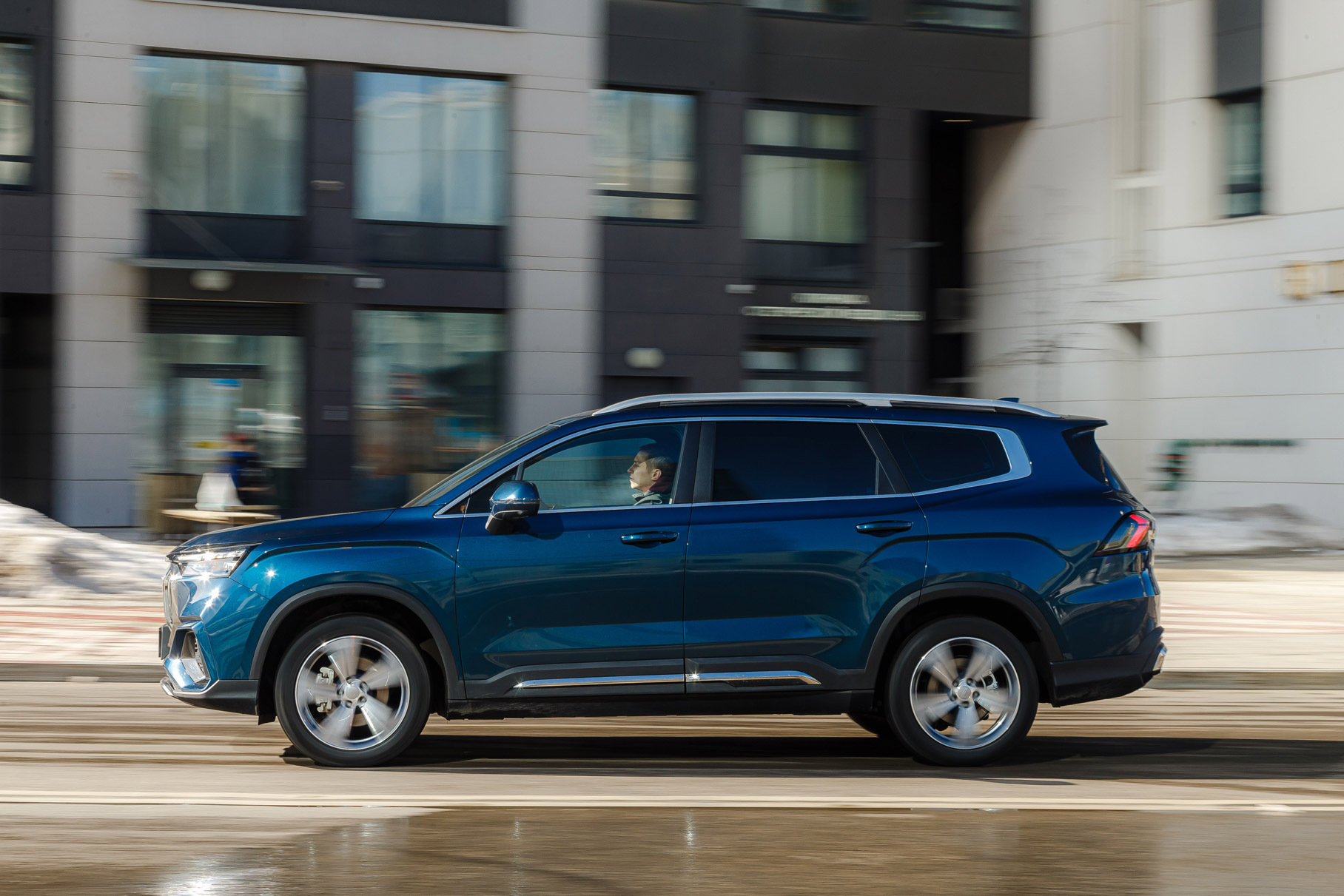 Subjectively and according to measurements with available means, Okavango accelerates in an average of 8 seconds rather than the declared high 9. This is indirectly confirmed by global, and not Russian official characteristics – 7.9 seconds are indicated there. In any case, the crossover has enough dynamics
Subjectively and according to measurements with available means, Okavango accelerates in an average of 8 seconds rather than the declared high 9. This is indirectly confirmed by global, and not Russian official characteristics – 7.9 seconds are indicated there. In any case, the crossover has enough dynamics
Dmitry Pitersky
The perception of dynamics is enhanced by decent controllability. Light steering, clear feedback and moderate roll allow minimal reduction in speed before corners. This means that acceleration at the limit of engine capabilities is rarely required. That is why it is so easy to move quickly in the Okavango, despite the car’s weight of 1.8 tons (and still 700 kg less than the weight of the new-generation BMW M5).
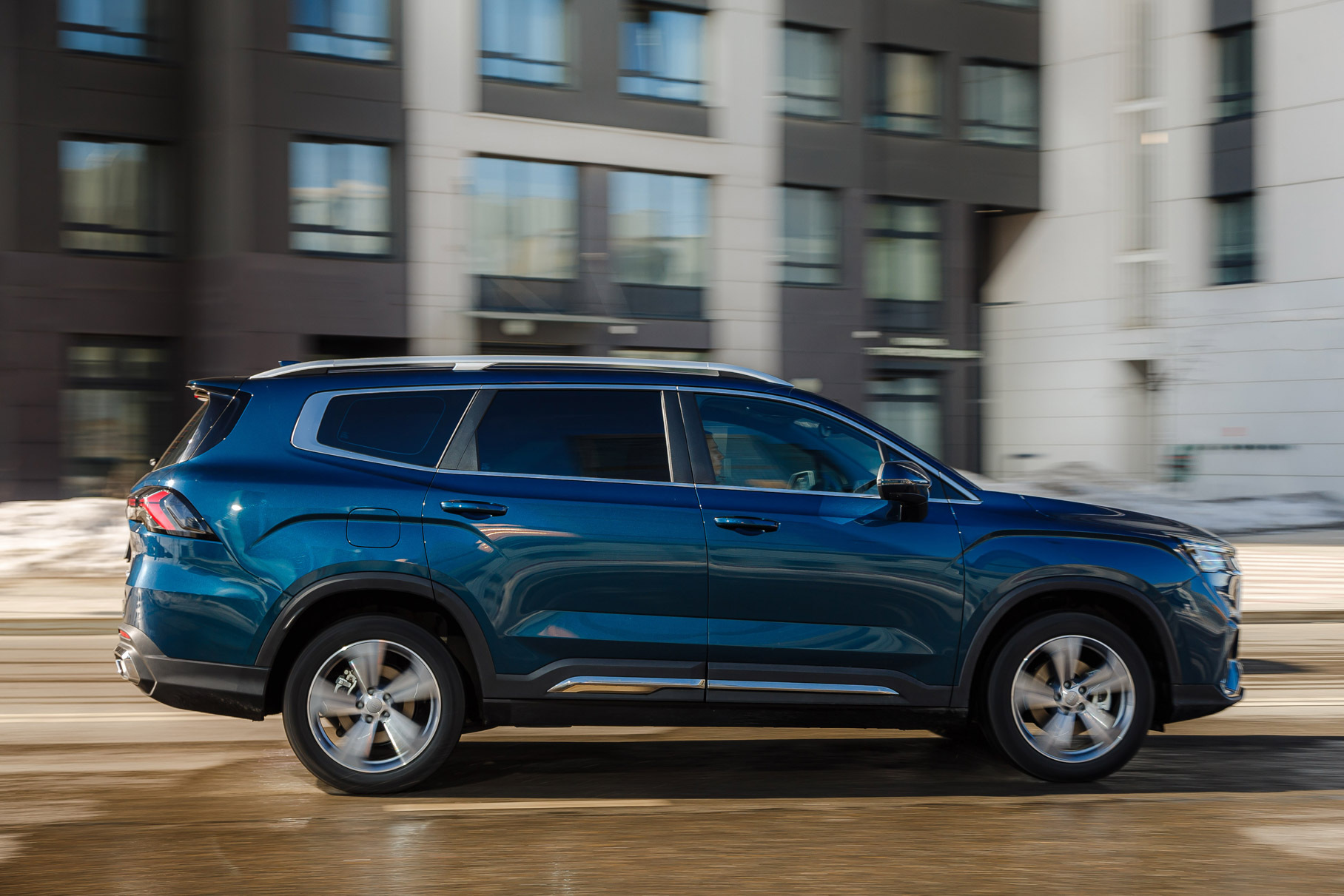 Soundproofing is weak, but you can’t call Okavango acoustically uncomfortable. Rather, the sensations correspond to those you expect to get in a cabin with such a budget finish.
Soundproofing is weak, but you can’t call Okavango acoustically uncomfortable. Rather, the sensations correspond to those you expect to get in a cabin with such a budget finish.
Dmitry Pitersky
The damping of bumps is also excellent: all the variety of road relief elements is softly and silently dissipated somewhere under the bottom. The chassis works with road surface defects in an exemplary manner – even better than any of the more expensive models: Tugella or Monjaro. Okavango has an excellent balance of stability and comfort – the suspension is quiet, collected and energy-intensive at the same time. This allows you to drive on an imperfect road with minimal stress, paying attention to a large group of fellow travelers, and not to go around endless bumps.
https://quto.ru/geely/okavango/if/suv5d
This crossover has only one significant drawback – the lack of all-wheel drive. Which soon after the launch appeared in the Atlas for an additional fee of a reasonable 200 thousand. But the urban fashionista does not need “four everywhere” as acutely as the travel-oriented utilitarian brutal Okavango. Otherwise, this is an excellent car for real life – without excesses, but sincere and comfortable for its small money by today’s standards.
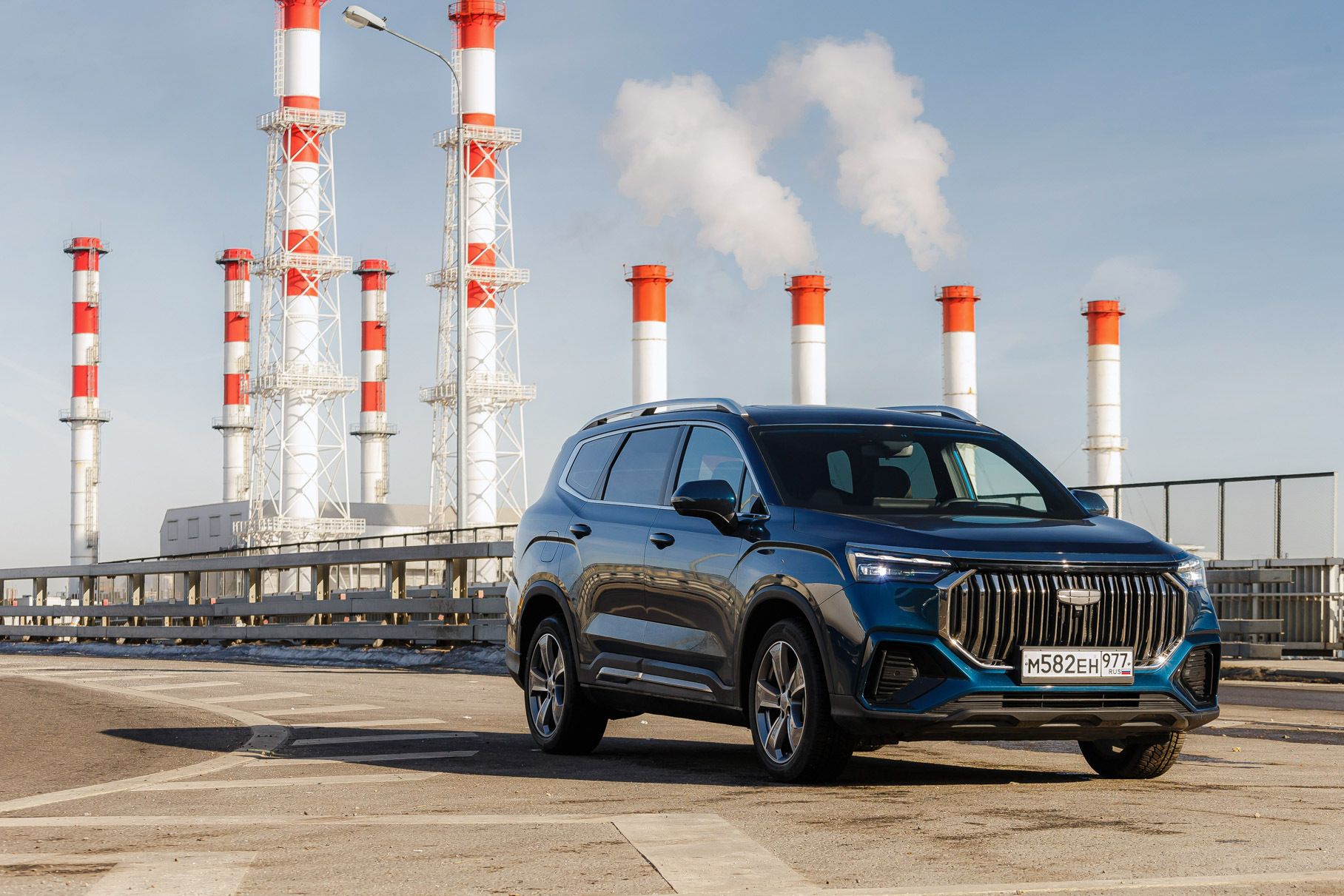 Dmitry Pitersky
Dmitry Pitersky  Dmitry Pitersky
Dmitry Pitersky 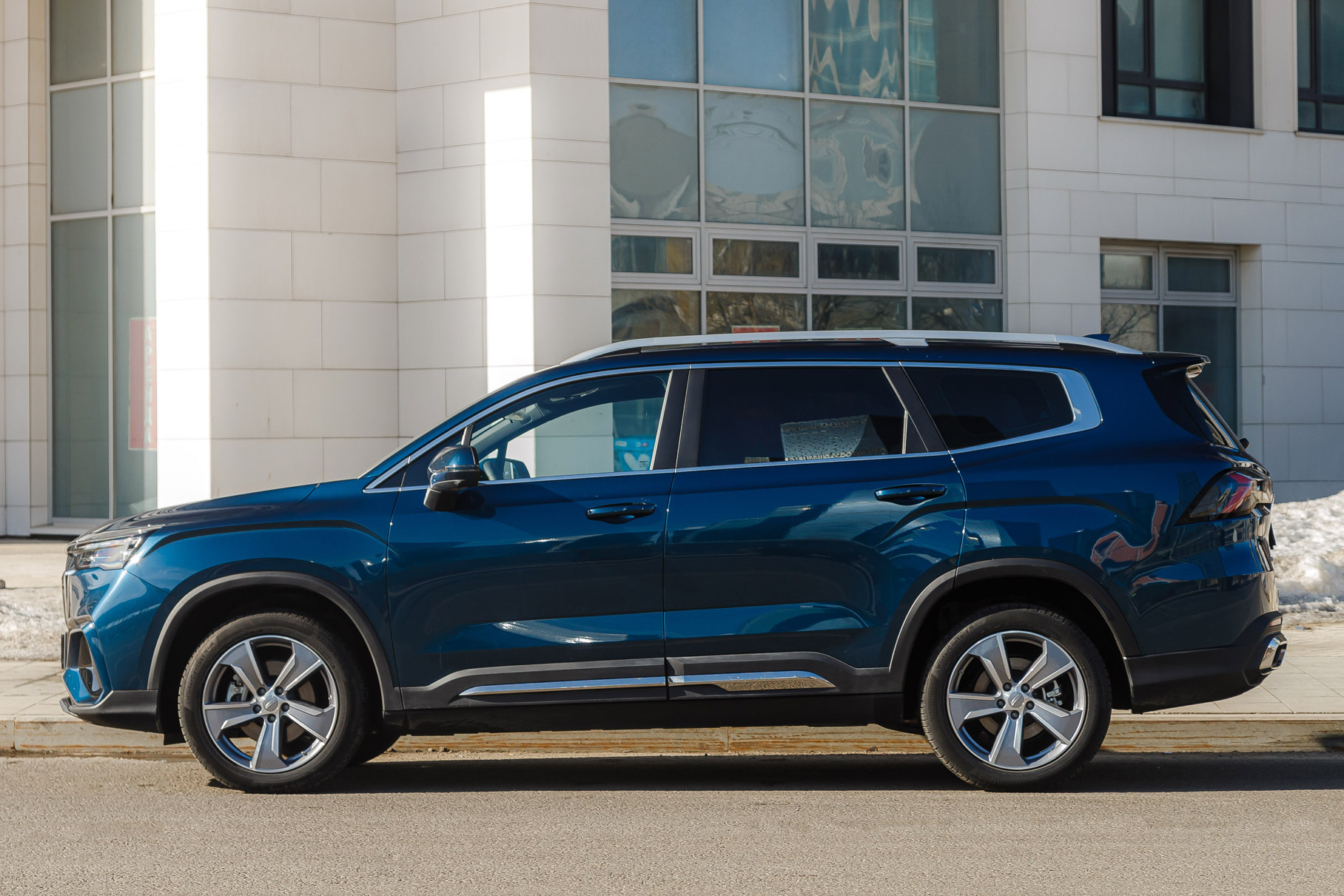 Dmitry Pitersky
Dmitry Pitersky
Conceptually and functionally, the Geely Okavango reminded me of the Volkswagen Teramont. It is also spacious, fast, and has excellent control, but is rather solid both outside and inside. Except that the Volkswagen has all-wheel drive, but the suspension is worse. And the price is twice as high. The Okavango is a great option for a large family or an active lifestyle. To summarize, it is more comfortable inside than many 7-seater crossovers, and it drives no worse than most 5-seaters. /m
CarGeely OkavangoLikeSpace and functionality, engine and chassisDislikeNo all-wheel drive, noise insulationVerdictKawabanga, Okavango!Engine1969 cm³, petrol L4 turbo, 200 hp, 325 N∙mTransmissionRKP-7Numbers9.6 s; 200 km/hWeight1780 kg
Detailed technical specifications
Geely Okavango Engine type petrol L4 turbo Displacement, cm³ 1969 Max. power, hp / rpm 200/4500 Max. torque, Nm / rpm 325/1800–4000 Drive type front Gearbox robotic, 7-speed Front suspension spring McPherson Rear suspension spring multi-link Dimensions (LxWxH), mm 4860x1910x1770 Wheelbase, mm 2825 Curb weight, kg 1780 Trunk capacity, l 227/628/2360 Acceleration 0–100 km / h, s 9.6 Max. speed, km / h 200 Fuel consumption (combined), l / 100 km 7.7 Fuel tank capacity, l 60 Price, RUB from 3 449 900 Test of Jaecoo J8 — a flagship crossover that tries to be more than its price Wey 07: Li L9 replacement from the official dealers? New Tank 700: video







